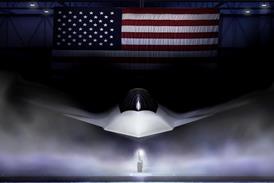Russian investigators believe an inadvertent mode change led an Azur Air Boeing 757-200 to pitch up, lose airspeed and nearly stall shortly after taking off from Goa.
The aircraft (VP-BLV) had been transporting 232 passengers and seven crew members on a charter service to Rostov-on-Don.
Federal air transport regulator Rosaviatsia says it departed with a take-off weight of 113.5t, close to the maximum of 115.9t, and had been climbing with a 5° flap setting. The 757 was operating under visual meteorological conditions.
As it neared 2,750ft the aircraft’s airspeed bled away to 134kt, below that required for the configuration, after it experienced an “uncontrolled” increase in pitch to 29.4°, says Rosaviatsia.
The crew was alerted by visual and aural warnings, as well as the stick-shaker, and the captain immediately acted to counter the approach to stall, disengaging the autopilot and pushing the control column forward, pitching the aircraft 2.2° nose-down.
It entered a descent with a vertical speed of more than 3,800ft/min. The stick-shaker stopped and the aircraft’s thrust was increased to near-maximum in order to recover.
Analysis of the flight-data recorder, says Rosaviatsia, shows that the aircraft had reached a height of 885ft and a speed of 200kt when – simultaneously with a switch to a lower engine thrust setting – the ‘vertical speed’ mode engaged.
“This mode was probably erroneously activated by the first officer,” says Rosaviatsia, pointing out that standard operating procedures do not involve using vertical-speed mode at this point in flight.
Some 1.5s after this mode activation the ‘flight level change’ mode was engaged for 3s and the autopilot’s channel ‘C’ was automatically switched on. As this channel activated, the autopilot – for undetermined reasons – entered vertical-speed mode with a climb rate of nearly 3,700ft/min.
By this point the jet’s airspeed had started declining from 201kt to 195kt. The aircraft attempted the high climb rate without a change in engine power, and its airspeed continued to fall.
Calculations show that the aircraft would only have been able to climb at 1,600ft/min without losing airspeed.
Rosaviatsia says it does not have a record of the cockpit conversation, which means it is unable to give an “unequivocal” analysis of the pilots’ interactions.
But it says there is sufficient evidence to suggest the crew probably failed to monitor and mention the changes of autopilot modes. The entry into ‘vertical speed’ mode instead of ‘flight level change’, it states, led to an increase in angle-of-attack and a loss of airspeed.
Rosaviatsia says insufficient crew-resource management contributed to the situation, and is pressing for improved simulator training and increased awareness among pilots of the 757 incident, which occurred on 6 February last year, and techniques for in-flight upset prevention and recovery.
Investigators are probing another incident involving an Azur 757-200, on 16 June this year, during which the aircraft experienced excessive pitch and bank while attempting to land at Antalya.
Source: Cirium Dashboard


























